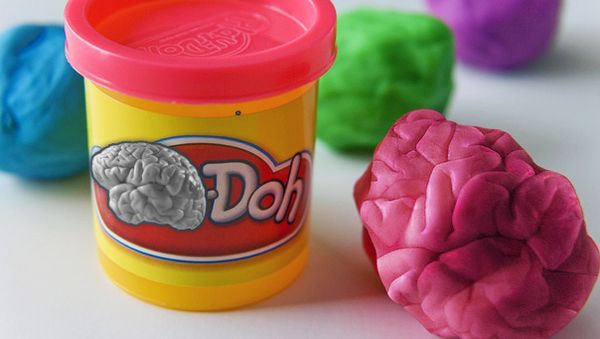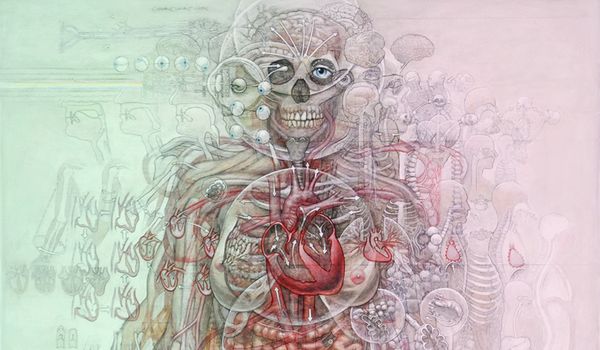Claire Johnson, M.D. • • 4 min read
It’s All In Your Head: How to Take Advantage of Neuroplasticity

“Riches, mediocrity and poverty begin in the mind.”
– Remez Sasson
How do you talk to yourself? Do you find fault with most aspects of your life?
Do you talk to others like that? Would let anyone talk to you like that?
When we stop to listen to what our minds are telling us, it’s shocking to realize how much of it is negative. It may seem overwhelming and leave you feeling powerless over your mind and the direction it wants to lead you.
Prior to 20 years ago, we thought the brain was hard-wired and fixed, but we now know that from birth to the end of life, our mind is constantly changing and our thoughts are more powerful than we ever imagined guiding the steps in our lives.
Our individual thoughts determine the structure of our brain and the steps that we will take out to lay down the path of our lives.
You probably notice that the more compassionate talk you have with yourself, the more grace you give yourself for failing and trying again.
“Your beliefs become your thoughts,
Your thoughts become your words,
Your words become your actions,
Your actions become your habits,
Your habits become your values,
Your values become your destiny.”
― Mahatma Gandhi
The concept of this emerging field of science is called neuroplasticity — the brain’s ability to reorganize itself by forming new neural connections. In the last two decades, neuroscientists have overthrown the dogma that the adult brain cannot change. Changes in neuroplasticity has led to promising treatment in every aspect of life from treatment of stroke and injury victims, dyslexia to prevention of cancer. But there are everyday aspects of this emerging revolution of science that we can apply to our every day lives and the process is simple.
These changes are seen in many areas of the brain including the anterior cingulate cortex and the amygdala. Unless you are a neuroscientist, which I once was, the names do not matter as much as the message does. In his newest book released this year, “Just One Thing,” Rick Hanson, Ph.D. says “The details are complex, but the key point is simple: how you use your mind changes your brain – for better or worse.”
What’s most important is that the brain is constantly rewiring itself. Sometimes it’s haphazard, other times reinforcing positive thoughts and more often negative thoughts. Unfortunately, the brain has a natural tendency to hold on to negative experiences more often It is up to you. You didn’t have that choice as a kid, but you make that choice as an adult. Your negative self-talk that has uniquely wired your brain and guided your actions for months or even years can cease over time.
“Don’t believe everything you think.”
In the labs of at institutions including the University of Wisconsin and Harvard Medical School, ground-breaking Western medicine meets centuries-old Eastern practices revealing the power of the mind to sculpt our gray matter. At the University of Wisconsin Waisman Laboratory for Brain, Professor Richard Davidson is funded by the 14th Dalai Lama’s personal trust to study the effects of meditation and compassion on the brain. The Dalai Lama has a long-standing interest in Davidson’s work. Over the past decade, the Dalai Lama has supplied Davidson with over a dozen Tibetan Buddhists with over 10,000 hours of meditation. Research suggested that meditation altered the structure and function of the brain. One of the greatest passions of the 14th Dalai Lama is an alliance between Buddhism and science. The Tibetan Monks have been shown to have powerful gamma activity unlike anything researchers had ever seen. Davidson developed a passion for meditation since the 1960s.
But, you don’t have to become a Tibetan monk to create a more positive path and permanent change. More recently, on the East Coast at Massachusetts General Hospital, Sarah Lazar, Ph.D., an avid runner and yoga enthusiast, showed that in a matter of eight weeks, mindfulness meditation training changes brain structure, especially in areas associated with awareness and compassion.
So what can you do to shift the change in your brain to more positive thoughts and rewire what we once thought was stuck? Here are 5 things you can start doing today:
1) Awareness
Recognize your negative thoughts. Do you talk to yourself in a way that you would not allow others? Is there a pattern or a certain aspect of your life? About your body, your successes, in relationships? Don’t judge it. Just recognize it. Self-compassion. Watch how you talk to yourself. Tell yourself, “ I chose to give myself the grace and compassion I have always extended to others.” Be a conscious observer of your thoughts without judgement.
2) Attach a positive thought to a negative one
“I’m out of breath, but I can now run a 5K. I’m stronger.”
3) Start each day with a daily devotion or mantra
4) Meditation and other mindfulness practices
Stay present in the moment and refrain from negatively rewiring your brain. Be still with yourself upon waking or right before falling asleep when the conscious and subconscious are closest.
5) Check out one of these books:
- Just One Thing: Developing A Buddha Brain One Simple Practice at a Time by Rick Hanson
- Buddha’s Brain: The Practical Neuroscience of Happiness, Love, and Wisdom by Rick Hanson
- Train Your Mind, Change Your Brain: How a New Science Reveals Our Extraordinary Potential to Transform Ourselves by Sharon Begley
- The Brain That Changes Itself: Stories of Personal Triumph from the Frontiers of Brain Science by Norman Doidge, M.D.
- Rewire Your Brain: Think Your Way to a Better Lifeby John B Arden, PhD
- Wherever You Go, There You Are: Mindfulness Meditation in Everyday Life by Jon Kabat-Zinn










